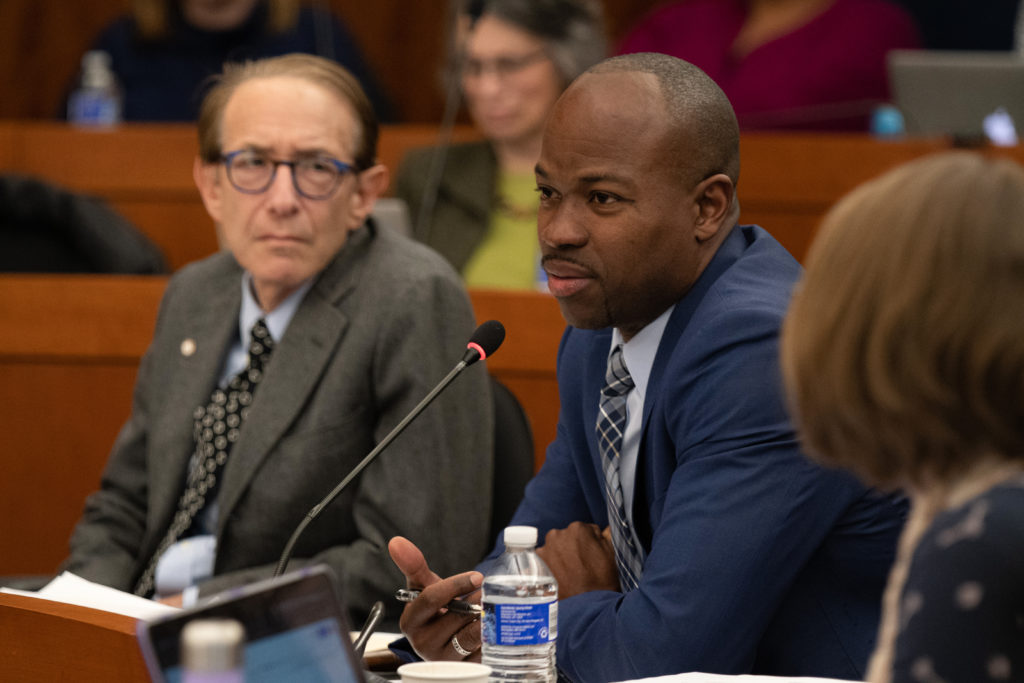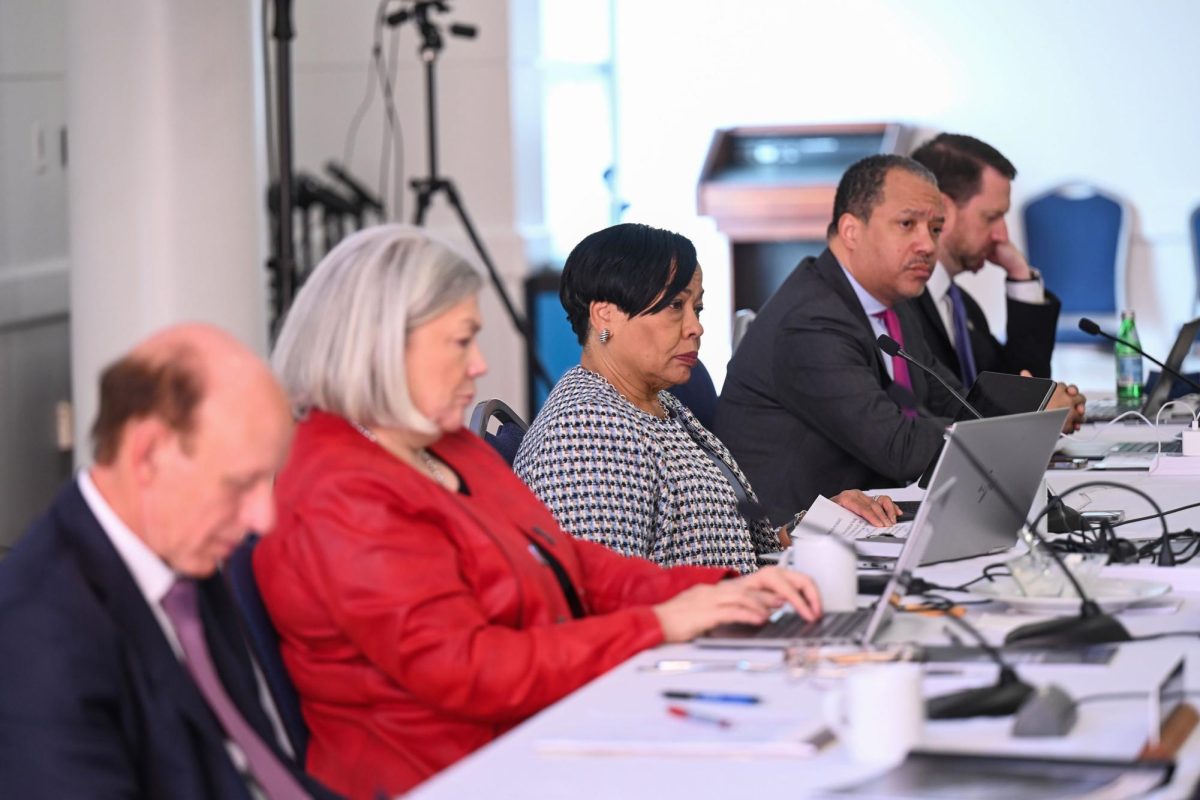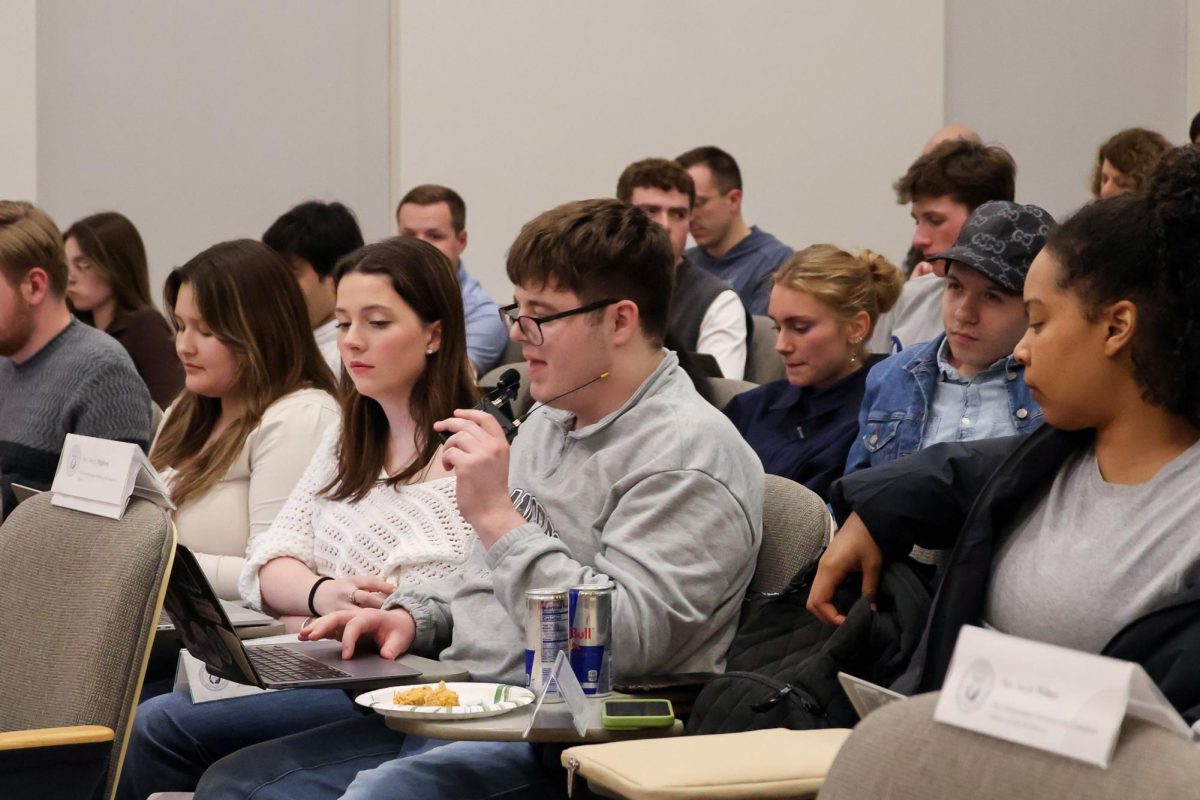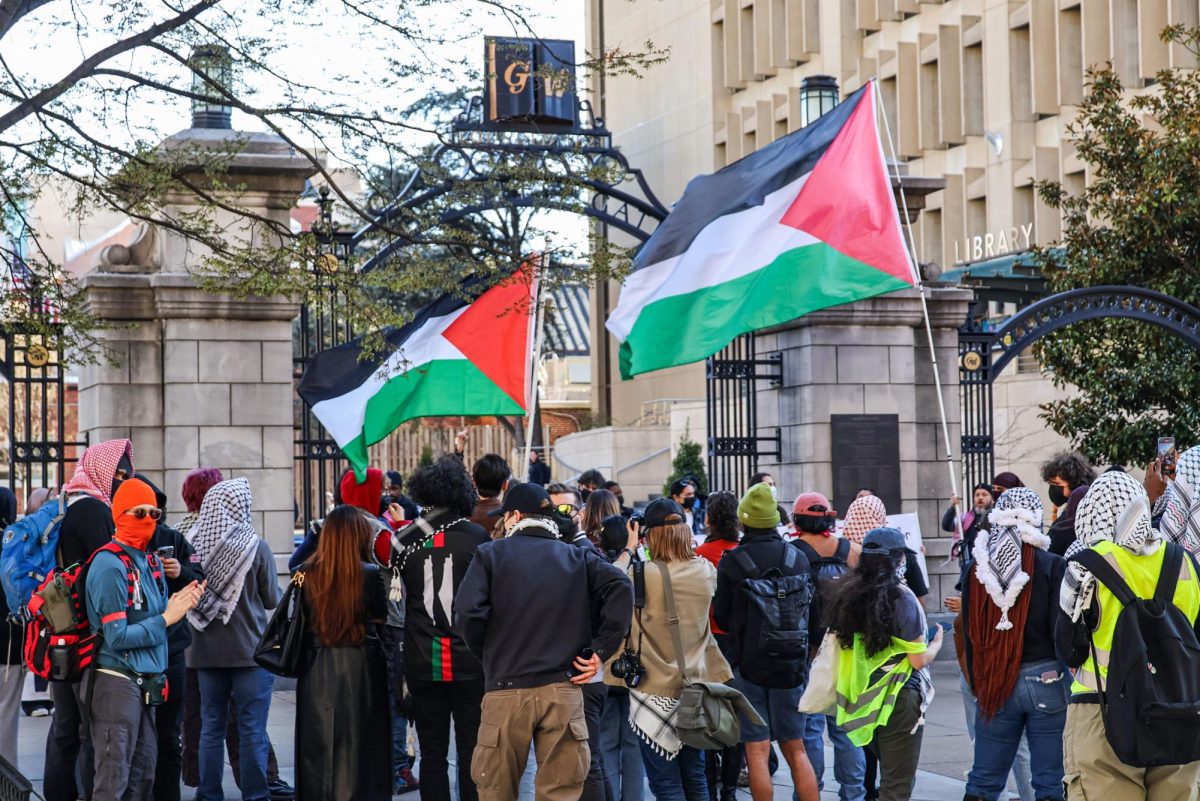Reinstating in-person classes in early April after just two weeks of remote learning was once a possibility.
But two months later, University President Thomas LeBlanc and Provost Brian Blake logged off the virtual May Faculty Senate meeting a few minutes early to join their now-regular ritual: the 5 p.m. Crisis Decision Team call, during which officials consider the possibility of remote operations for the fall semester.
Officials said the team – which is composed of LeBlanc, Blake and Executive Vice President and Chief Financial Officer Mark Diaz – is one of many groups they formed to facilitate check-ins between GW’s top administrators as they grapple with responding to the COVID-19 pandemic.
Even with the extensive planning infrastructure now in place, officials have said through more than 50 public statements on GW’s response to the pandemic that the uncertain and fast-paced circumstances have necessitated academic and financial decisions they had once hoped they would “not need.”
“It’s hard to believe, but just about three months ago we were all on campus and experiencing what we now call a ‘normal’ spring semester,” LeBlanc said at a Board of Trustees meeting Friday. “As we all know, this changed very quickly.”
Scott Burnotes, the associate vice president for safety and security, said GW’s response to the pandemic began in late January – the approximate time of the first reported coronavirus case in the United States – when officials activated an on-campus Emergency Operations Center. Administrators also created a Pandemic Response and Readiness Task Force, which has now met daily for more than two months since cases began to steadily increase in the District, he said.
“The greatest challenge that GW faced, along with other institutions of higher education and local, state and the federal government, was the quick pace of developments,” Burnotes said in an email. “There is still a lot of uncertainty regarding information about the disease because it is a new and unknown factor in our daily lives.”
He said the task force includes a wide group of administrators from across the University, including the Division of Safety and Security; GW’s medical experts and faculty; Facilities Planning, Construction and Management; the Division for Student Affairs; the Division of External Relations; and the Student Association.
Each task force call begins with local, regional, state and federal situation reports with subsequent follow-ups on previous issues and updates from the group’s various stakeholders, he said.
Beyond the task force and Crisis Decision Team, Burnotes said the University Leadership Council and other groups meet on a “regular basis” to coordinate GW’s pandemic response.
LeBlanc, who leads many of these meetings, has repeatedly said he considers three sequential priorities identified through his institutional culture initiative when making major decisions – safety, care and efficiency.
“I think the bottom line message is we’re trying to, first of all, focus on the health and safety of our community,” LeBlanc said in an interview last month. “All the decisions we’ve made have started from that perspective. After that, we’ve tried to focus on taking care of the members of our community to the best of our ability, and then and only then, do we focus on cost and how we’re going to manage the costs.”
When the crisis intensified, officials transitioned classes online for the latter portion of the spring semester, packed and stored students’ belongings in residence halls and provided refunds for lost housing, dining and parking costs.
“But these and other decisions come with increased costs and decreased revenues estimated in the tens of millions of dollars,” LeBlanc wrote in a message to the GW community last week. “We have been working hard to manage this unexpected and significant financial impact.”
The University is projected to face a net loss of $25 million through June 30 as a result of the pandemic. Officials expect GW to lose between an additional $100 million and $300 million depending on when students return to campus, which may not happen until 2021.
LeBlanc said officials will need to make “personnel decisions” to offset lost revenues, which could include furloughs, pay and benefit reductions or early retirement options. Officials suspended merit pay increases next year, and top administrators will take a pay cut beginning July 1 – including a 20 percent pay reduction for LeBlanc.
“We face immediately tough choices,” he said at the Board meeting Friday. “We continue to listen to staff and students, consult with the Faculty Senate and share our discussions comprehensively with the Board of Trustees before making a budget decision.”
Board Chair Grace Speights said Friday the Board’s executive committee has met three times since early February, mainly to discuss GW’s pandemic response. The Board voted in early April to pause the development of GW’s next strategic plan as a result of the pandemic at LeBlanc’s recommendation.
“You have given more time, more energy and more resources than you have ever had to do before,” Speights told trustees Friday.
Diaz, the executive vice president, said in an interview earlier this month that the degree of uncertainty is “significant” as circumstances continue to change, which has made it more difficult to plan and make major decisions.
“This degree of uncertainty and not really having the playbook on this type of crisis makes it really difficult to land on specific dates with specific actions,” he said. “And again, the information just keeps evolving. So now at some point, we have to get to that fish or cut bait point where, ‘look, this is the best information we have, so what decisions are we going to make?’”
Officials plan to make a final decision on bringing students back to campus in the fall by mid-June.
Diaz said as officials grapple with major budgetary changes as a result of the pandemic, administrators are considering every scenario and option rather than limiting themselves in a “premature” way.
“We have to make sure we have all mitigation actions on the table,” he said. “Which ones do we then use or apply? I think the circumstances will dictate that.”
Blake, the provost, said at a senate meeting earlier this month that two groups formed during the pandemic – the Fall Enrollment Planning Committee and a Fall Re-Open Operations Initiative Committee – are spearheading GW’s contingency planning. Officials also formed five working groups – enrollment and retention, academic and faculty planning, student residential life, public health and research – to inform decision-making, he said.
Blake said the committees and working groups, which comprise more than 45 members in total, have released various surveys and met with students and faculty to garner ideas.
“The planning committees will be sending subject-matter expertise and planning reports to the operations committee and other leadership,” Blake said. “In those conversations, we’ll pull all that info together and develop some basic scenarios and contingency plans.”
Mayor Muriel Bowser also created a group late last month to plan the District’s reopening.
The Faculty Senate approved a measure this month to meet beyond its regular schedule, including at least one meeting of the full senate and six of its committees per month until August to respond “proactively” to the pandemic.
“Students really want to come back,” Blake said. “I think there’s great sentiment to return.”
Jared Gans, Parth Kotak and Shannon Mallard contributed reporting.








